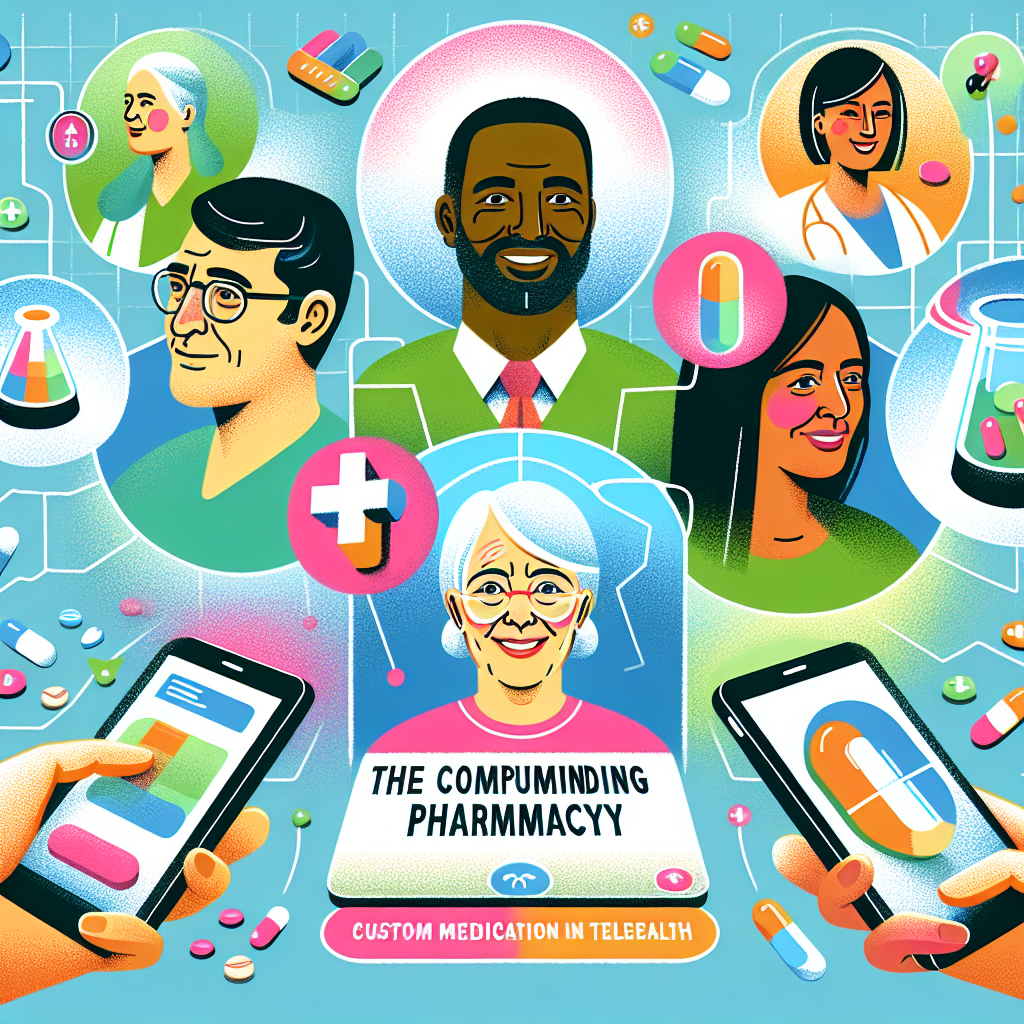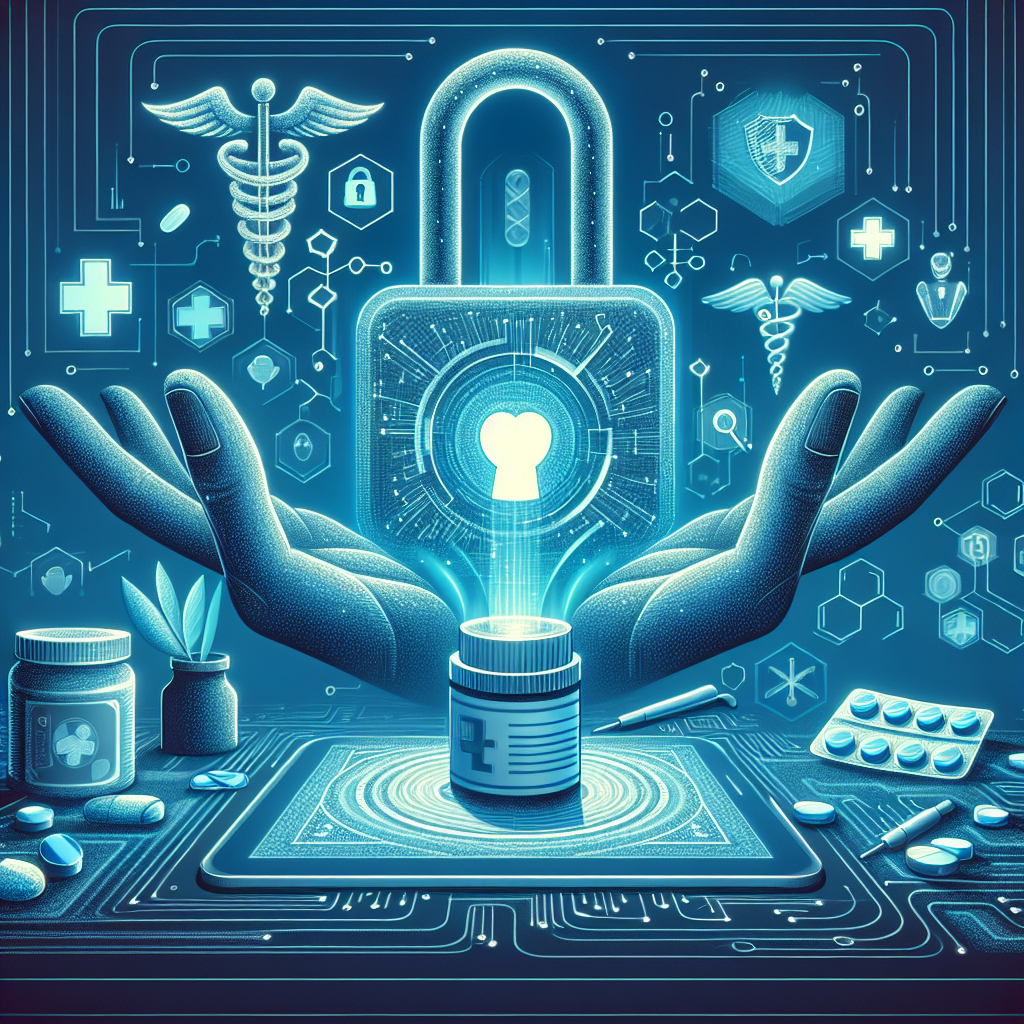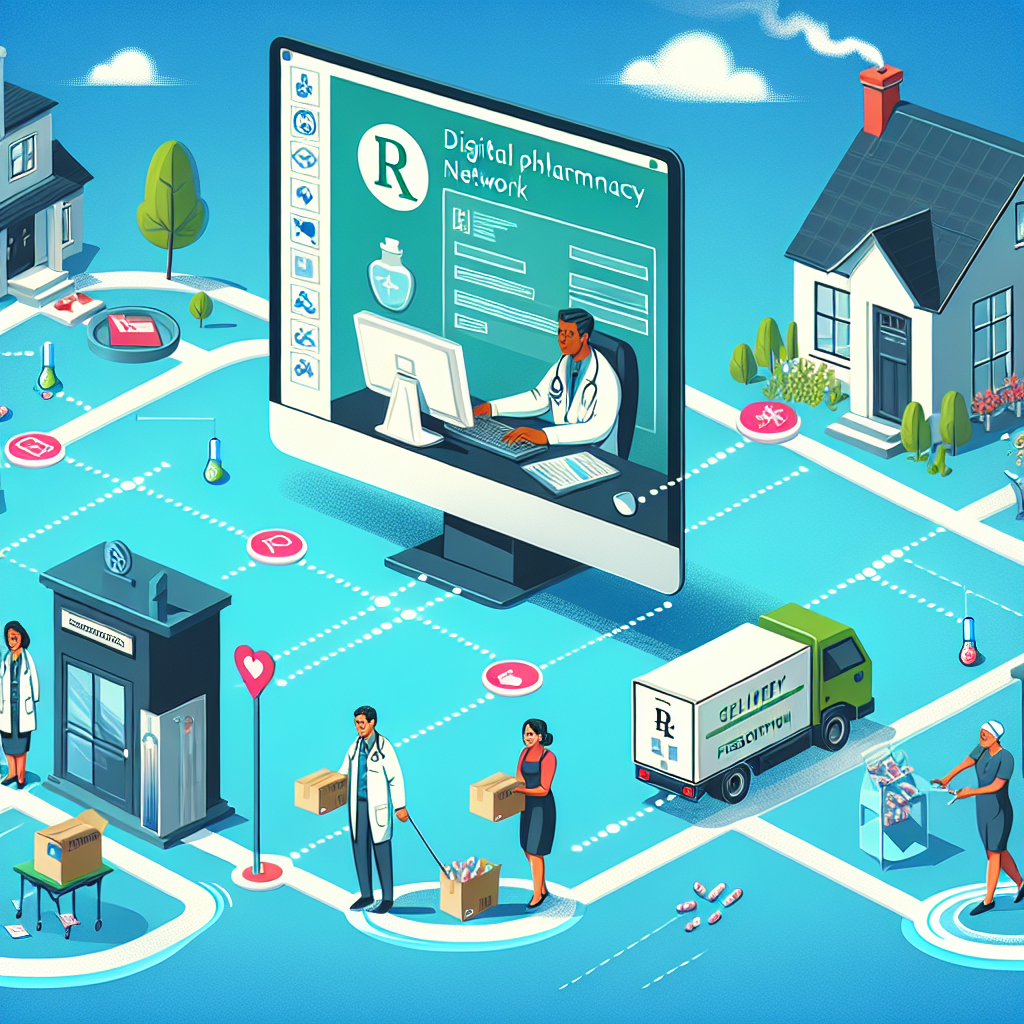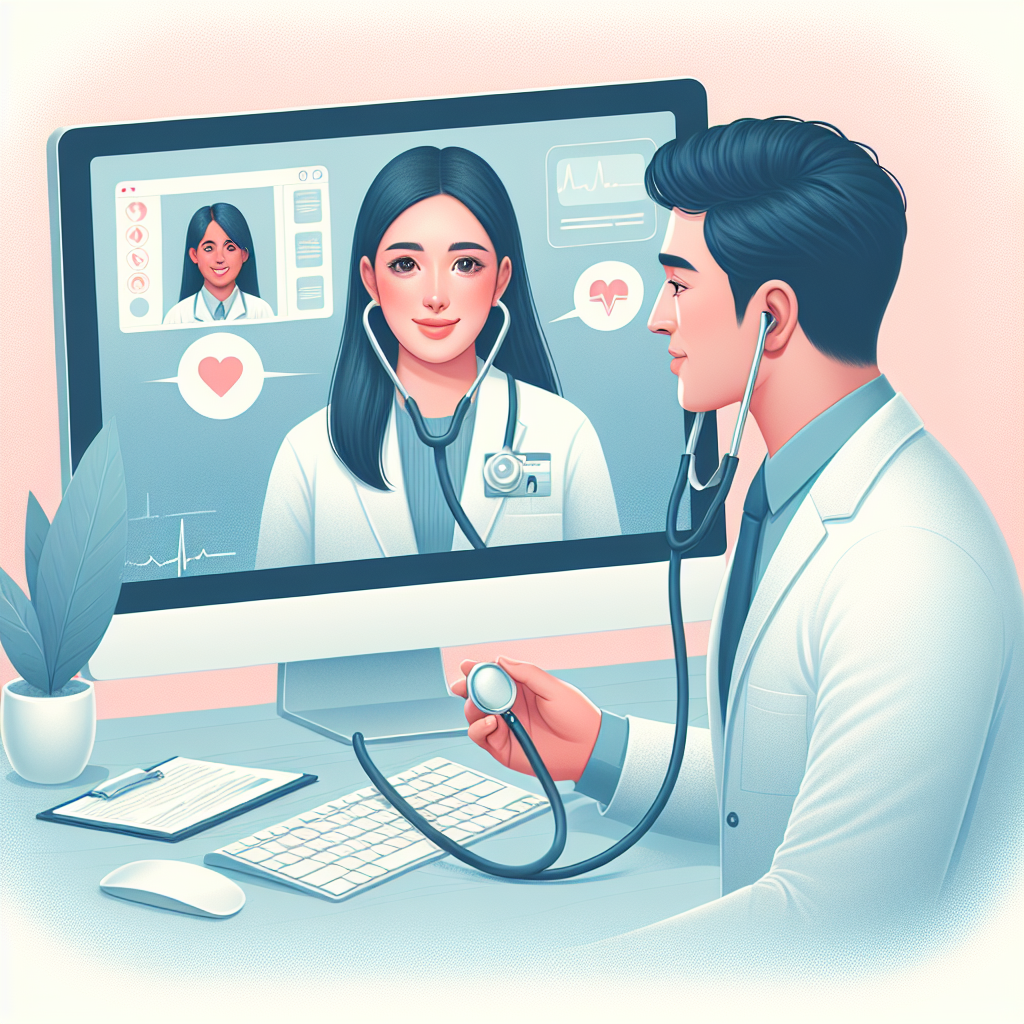The Compounding Pharmacy Connection: Custom Medications in the Telehealth Era
Revolutionizing Healthcare Through Telehealth
The rapid expansion of telehealth is transforming how patients access medical care. With virtual consultations, remote monitoring, and digital prescriptions, healthcare has become more accessible and convenient than ever before. However, despite these advancements, many individuals still face challenges when it comes to finding medications that meet their specific needs.
This is where compounding pharmacies come into play. These specialized pharmacies fill the crucial gaps left by mass-produced medications by creating customized formulations tailored to individual patients. According to the Alliance for Pharmacy Compounding, approximately 30 million compounded prescriptions are filled annually in the United States. As Dr. Amanda Lee, a board-certified telehealth internist, emphasizes, “Custom medications are pivotal for patients whose conditions or allergies don’t allow for one-size-fits-all treatments.” In today’s telehealth landscape, this partnership ensures personalized care continues beyond the screen.
The Rise and Role of Telehealth
Telehealth usage has surged by nearly 3,000% since 2019, driven by technological advancements, regulatory changes, and evolving patient expectations (CDC, 2021). Services such as video consultations, mobile health apps, and smart health devices now empower healthcare providers to diagnose and treat patients without requiring them to leave their homes.
Despite this progress, most prescription medications are still delivered in standard doses and formats—such as tablets, capsules, or creams—that may not suit every individual. In some cases, patients need dose adjustments or allergen-free formulations that aren’t available off the shelf. Compounding pharmacies solve this issue by working closely with telehealth providers to create custom medications and deliver them directly to patients’ doors. Visit eDrugstore.com to explore personalized pharmaceutical solutions designed for your unique health needs.
What Are Compounding Pharmacies?
A compounding pharmacy is a licensed facility where pharmacists craft personalized medications by modifying dosages, ingredients, and forms. This process is especially beneficial for individuals who:
– Suffer from allergies to common drug additives like dyes, lactose, or preservatives
– Require unique or reduced dosages
– Struggle with traditional pill ingestion and need alternative delivery forms
For instance, a child with autism may be unable to take a tablet and instead require a flavored liquid version of a medication. Similarly, an elderly individual with kidney complications may need a lower dosage than what’s commercially offered. Compounding pharmacists follow rigorous safety protocols, working in accordance with United States Pharmacopeia (USP) standards such as USP <795> for non-sterile compounds and USP <797> for sterile preparations, while maintaining close communication with prescribing telehealth professionals.
Advantages of Integrating Compounded Medications into Telehealth
Personalized Dosing for Better Treatment
For patients living with chronic conditions like thyroid disorders, diabetes, or renal disease, precise dosing is critical. Rather than splitting pills—which risks incorrect dosing—patients can benefit from meticulously crafted medications tailored to their specific requirements.
Alternative Delivery Methods
Individuals who have difficulties swallowing, such as seniors or those with dysphagia, can opt for liquid medications, creams, suppositories, or even medicated lollipops for children. These alternatives not only provide comfort but can also improve drug absorption.
Allergy-Free Formulations
Nearly 19 million Americans experience adverse reactions to ingredients like gluten, lactose, dyes, or artificial preservatives (FARE, 2020). Compounded medications eliminate these allergens, resulting in safer and more effective treatment options.
Improved Taste and Palatability
For children, pets, or others who find standard medication flavors unappealing, compounding pharmacists can customize the taste with options like grape, cherry, or even peanut butter (for veterinary use). According to Dr. Jason Miller, PharmD, custom formulations have been shown to increase medication adherence by up to 60% in pediatric and elderly patients.
Seamlessly Integrating Compounding into Telehealth Workflows
Blending compounding capabilities with telehealth platforms creates a fully integrated care experience. Here’s a typical workflow:
– During a virtual appointment, the physician identifies the need for a custom medication.
– The prescription is securely sent to a licensed compounding pharmacy.
– The pharmacist reviews the order, verifies it with the physician when needed, and begins preparation.
– The final product is safely packaged and shipped to the patient’s home, often within just 2–3 business days.
Patients receive detailed instructions with their medication and have access to ongoing support from pharmacists or nursing staff, facilitated through the telehealth platform. This model eliminates the need for in-person pharmacy trips while maintaining high standards for safety and quality.
Enhancing Patient Adherence and Health Outcomes
Receiving medication in the right dosage and format can significantly improve a patient’s ability to follow treatment plans. Research published in the Journal of Managed Care & Specialty Pharmacy found that improved adherence led to a 25% decrease in hospital admissions among patients with chronic conditions.
Custom medications are especially indispensable in areas such as:
– Pediatrics, where tailored dosages are often required
– Oncology, due to the highly individualized nature of cancer treatment
– Veterinary care, as animal species vary widely in tolerance and dosage needs
The combination of telehealth delivery and personalized medication minimizes waste, maximizes compliance, and supports better health outcomes overall.
Regulatory and Safety Protocols in Compounded Medications
Safety and regulation are foundational elements of compounding pharmacy operations. These pharmacies are governed by federal and state regulatory bodies, along with USP guidelines, to ensure that each formulation meets pharmaceutical-grade standards.
To maintain safety and efficacy, compounded medications must be:
– Produced using validated protocols
– Documented with full transparency
– Quality-tested for potency, stability, and, when applicable, sterility
Telehealth providers also have regulatory responsibilities. They must obtain patient consent when prescribing compounded drugs and must clearly communicate the distinctions between these and conventional medications. The FDA requires that compounded medications differ from commercially available products unless there is a well-documented medical necessity. Collaboration between doctors and pharmacists guarantees that any concerns—from dosage adjustments to side effects—are addressed promptly.
Modern online pharmacies such as eDrugstore.com also provide real-time order tracking, refill reminders, and expiration alerts, all aimed at ensuring patients have consistent, reliable access to their treatments.
Envisioning the Future of Personalized, Digital Healthcare
As technology continues to evolve, so does the relationship between telehealth and compounding pharmacies. Innovations such as artificial intelligence (AI), wearable health monitors, and real-time data analysis are beginning to shape a more advanced model of personalized medicine.
In the near future, AI may guide physicians in designing highly specific prescriptions based on genetic profiles, medical history, and lifestyle. Meanwhile, wearable devices might alert pharmacists to real-time changes in a patient’s health metrics—automatically informing dose adjustments for optimal treatment.
Additionally, virtual pharmacy platforms will likely feature live pharmacist consultations, instant refill alerts, and seamless medication tracking—all accessible from a mobile device at home. The future of healthcare is not only digital—it’s handcrafted to each individual, with compounding pharmacies paving the way.
Conclusion: A New Era of Holistic, Tailored Care
The synergy between telehealth services and compounding pharmacies represents a breakthrough in personalized medicine. By offering virtual consultations coupled with customized treatments, healthcare providers can deliver care that is both convenient and uniquely tailored to each patient.
As regulations adapt and digital health tools become more sophisticated, the bond between telehealth and compounding will only strengthen. Patients stand to benefit from fewer side effects, easier medication administration, and better treatment success rates. With this momentum, the future of healthcare is becoming truly individualized—right down to the last milligram.
Resources and References
– CDC. “Trends in the Use of Telehealth During the Emergence of the COVID-19 Pandemic.” 2021
– FDA. “Compounding and the FDA: Questions and Answers.” 2022
– United States Pharmacopeia. “USP General Chapter <795> & <797>”
– FARE. “Facts and Statistics.” 2020
– Alliance for Pharmacy Compounding. “Compounding Pharmacy Industry Overview”
– Journal of Managed Care & Specialty Pharmacy. “Impact of Medication Adherence on Healthcare Costs and Outcomes”
– eDrugstore.com – Explore medications customized for your health, from your home
Visit eDrugstore.com to discover how compounded medications can be safely and conveniently delivered to your door.










